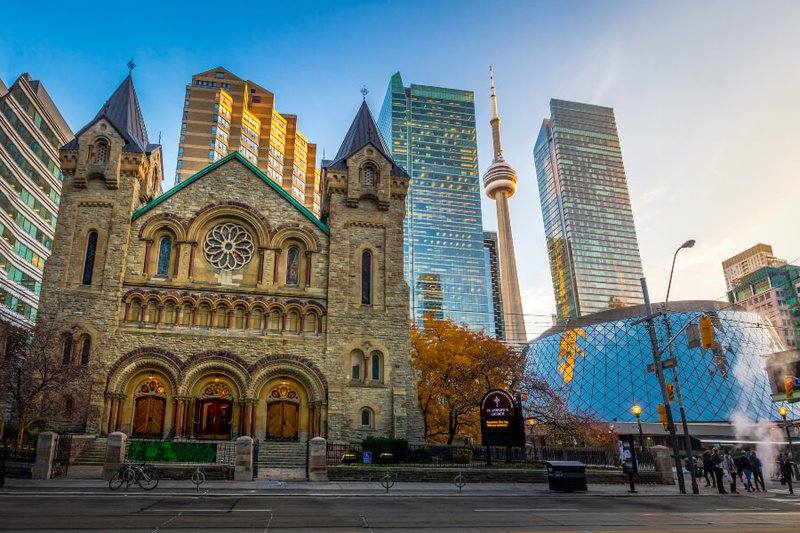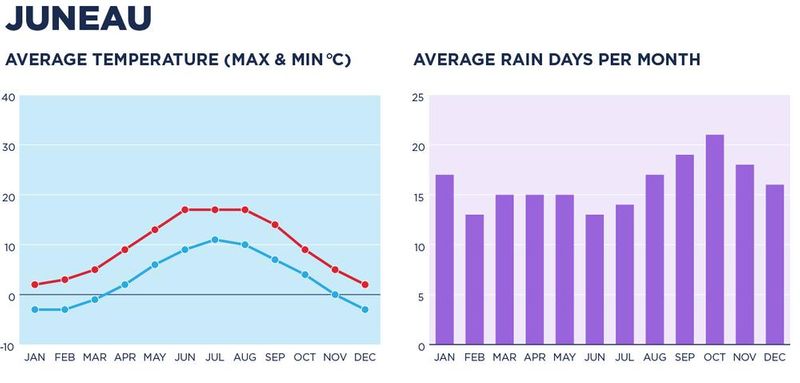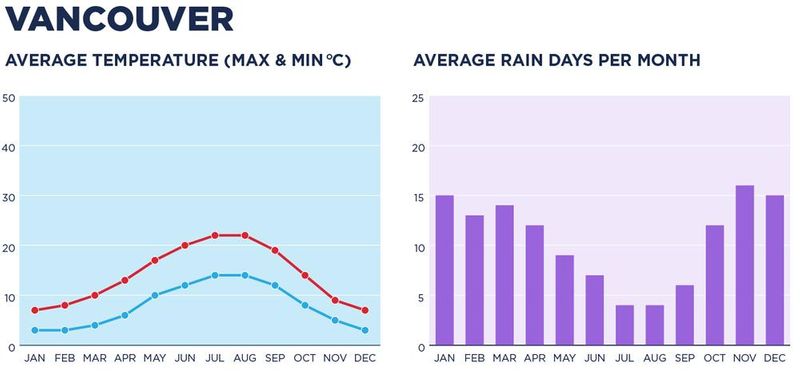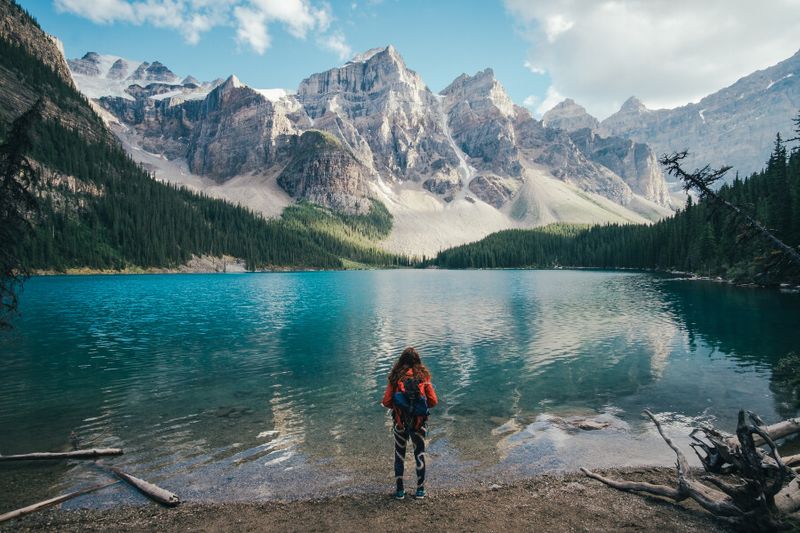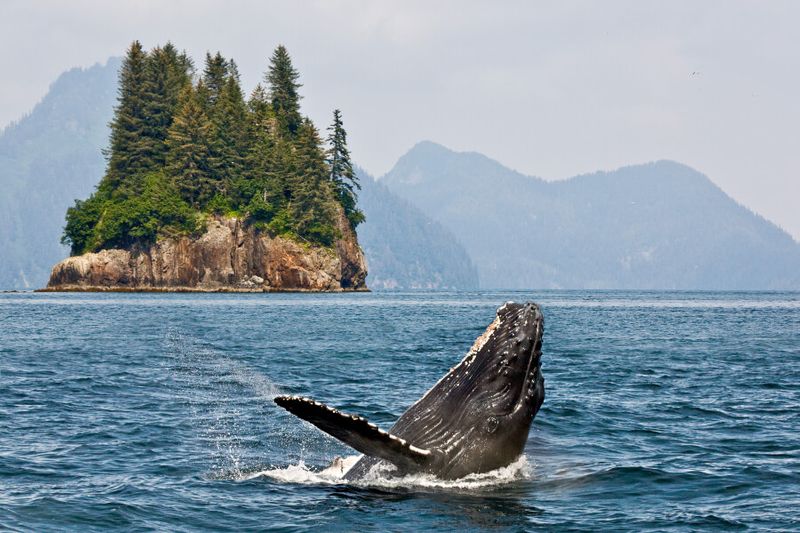Canada has it all – from breathtaking scenery, to modern, vibrant cities, friendly locals and incredible wildlife. Likewise, neighbouring Alaska has some of the most famous wilderness in the world. But, when is the best time to go?
Canada is an enormous country that experiences very distinct seasons, but the diversity in the landscape between regions means the conditions can present differently within each.
In the West, Canada boasts many incredible treasures, from the cosmopolitan city of Vancouver, to the famous resort of Whistler, beautiful Banff and the picture-perfect scenery of Lake Louise in the Rocky Mountains, and some of the most famous National Parks on the planet. In the East, French Canada is simply stunning with European architecture and equally captivating scenery. In-between, the cities of Calgary, Toronto and Ottawa each have their own flavour, packed with multi-cultural influences and an innovative art scene.
Summer is the peak travel period across Canada and, given its proximity to the Arctic, both locals and visitors make the most of the warm, sunny weather. Canada is the king of outdoor pursuits, and the summer months present ideal conditions for hiking, boating, fishing and more. Wilderness areas of British Columbia and Alberta are great for spotting active wildlife such as moose and bears, and it's the perfect time to tick the Rocky Mountaineer off your bucket list.
In cities like Vancouver and Toronto, people enjoy al fresco dining and spend as much time outdoors as possible. In neighbouring Alaska, it's the peak time for cruising the Inside Passage, exploring the capital of Juneau, or watching an iceberg calving into the sea. Montreal's famous Jazz festival is a fixture on the summer calendar, along with Canada Day and the Calgary Stampede; visit during the grand festivities to immerse yourself in Canadian culture.
Canadian summer temperatures vary from province to province but are usually in the twenties. In Vancouver, expect averages of 23 degrees celsius, in Banff and Whistler it will be around 22 degrees, Calgary averages 23 degrees, Toronto up to 27 degrees, Quebec 26 degrees, Montreal 27 degrees and Ottawa 26 degrees.
In Alaska and the Inside Passage, summer temperatures range from 0 to 16 degrees, so warm clothes are still a must. One thing there's no shortage of is sunshine, with almost 18 hours per day.
By autumn, the weather cools and a breathtaking display of colour emerges, particularly on the East Coast. This famous site attracts visitors from all over the world and the moderate temperatures make it a great time for touring. The autumn period is also known for the salmon run, when millions of fish return to the river systems and attract bears. The colours along Niagara Gorge are simply spectacular at this time of year, and the Rockies are usually still pleasant but can experience surprise snow flurries.
Vancouver gets down to roughly 14 degrees celsius in the middle of autumn, while Banff and Whistler average 11 degrees, Toronto 15 degrees, Calgary 12 degrees. In the east, Montreal will be around 14 degrees, Quebec 12 and the capital Ottawa 13. The Inside Passage averages around 8 degrees at this time, and the wildlife will be out and about getting ready for winter. If you're lucky, you could even spot the Northern Lights.
Canada is a famous winter destination for many reasons. With the first dump of snow, the Rocky Mountains transform into a world of buzzing, world-class ski resorts; people flock to Banff and Whistler at this time of the year. The beautiful Lake Louise freezes and turns into an enormous ice-skating rink, Christmas is celebrated with markets and festivals, and the world’s largest winter carnival, the Quebec Winter Festival, runs over 14 days.
Almost all of the country experiences snowfall and most National Parks are closed. Those that remain open make the most of the season with activities like dog sledding. Yes, the weather does drop significantly during winter, but rug-up in the right gear and you’ll enjoy the outdoors as much as locals do.
Temperatures in Vancouver hover around 5 degrees celsius in January. In Calgary, expect -5, in Toronto -2, in Banff -6, in Whistler -1, and in Montreal, Ottawa and Quebec, around -6.
Spring brings some welcome sunshine to the country, and the wildflowers beckon everyone back from winter. Temperatures rise above freezing, National Parks start re-opening, and whale sightings become more common on the Atlantic coast.
Temperatures in Vancouver hover around the mid-tens, while Banff averages 7 degrees, and Whistler and Calgary both 10 degrees. On the other side of the country, Toronto will be around 12 degrees in the middle of Spring, Ottawa and Montreal 11 degrees and Quebec 9 degrees.
In Alaskan spring, destinations along the Inside Passage slowly come out of winter shutdown and the cruise season recommences, in time to see wildlife wake up and flowers burst into bloom.
Canada and Alaska's incredible scale and diversity mean there's something for visitors at any time of the year.
When will you go?
Where else do you want to visit?
